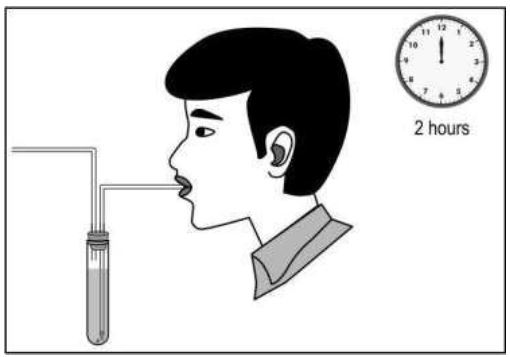CBSE 2024-25 Competency-Based Questions With Answers: The CBSE Class 10 Science chapter on Life Processes covers essential functions in living organisms, such as nutrition, respiration, circulation, and excretion. Competency-based questions in this chapter assess how well students understand these processes and their importance in daily life. These questions are designed to test the application of knowledge, asking students to explain how plants make food, how our body uses oxygen, or how waste is removed. By solving these questions, students not only strengthen their grasp of biological concepts but also improve their problem-solving and critical thinking skills, helping them in both exams and real-life situations. Check out the 2025 CBSE Class 10 Science Life Processes CBQs and download the PDF.
CBSE Class 10 Science Life Processes Competency-Based Questions
Check out the MCQs and free response questions from Chapter 5 of CBSE Class 10 Science, i.e. Life Processes, here.
| Q. No | Question | Marks |
| Multiple Choice Question | ||
| Answer the questions based on the following information. William Harvey (1578–1657) was one of the early biologists who studied the bodies of humans and animals. He even dissected the bodies and did experiments with the heart and blood vessels. He concluded from his experiments that the blood leaves the heart through the arteries and returns via the veins. However, he could not explain how blood left the arteries to enter the veins. He said there must be some structure between arteries and veins but he could not find them. Marcello Malphigi (1628–1694) later discovered these structures while studying a dead frog's lungs under a microscope. | 1 | |
| Q.1 | Which of the following structures did Malphigi find in the frog?
| 1 |
| Q.2 | What is the MOST LIKELY reason why Harvey could NOT find these structures?
| 1 |
| Q.3 | Which of the following statements about arteries and veins is TRUE?
| 1 |
| Q.4 | Which two chambers of the human heart have arteries connected to them?
| 1 |
| Free Response Question/ Subjective Question | ||
| Q.5 | Aerobic respiration requires intake of oxygen to breakdown food to release energy.
| 5 |
| Q.6 | Given below is an image of an experiment conducted by a student to understand the process of respiration. He blows into a clear solution present in the test tube and sees that it turns cloudy. 
| 3 |
Answer Key & Marking Scheme
| Q. No | Answers | Marks |
| Q.1 | B. capillaries | 1 |
| Q.2 | D. These structures were too small to be seen by the naked eye. | 1 |
| Q.3 | A. Arteries have thicker walls than veins. | 1 |
| Q.4 | D. left ventricle and right ventricle | 1 |
| Q.5 |
Plants: stomata/guard cells Human beings: alveoli/ lungs
(e) 0.5 marks for each correct answer:
| 5 |
| Q.6 |
| 3 |
Tips to Attempt Competency-Based Question
Here are some easy tips to help you attempt competency-based questions:
- Read the question carefully to understand what is being asked. These questions often focus on real-life applications of your knowledge.
- Instead of memorising facts, think about how what you've learnt can be used to solve the problem or explain the situation.
- Break them into smaller parts for longer questions and address each step logically.
- In multiple-choice questions, remove incorrect options to improve your chances.
- Don’t rush; take your time to think through the solution.
Also Read:
Comments
All Comments (0)
Join the conversation